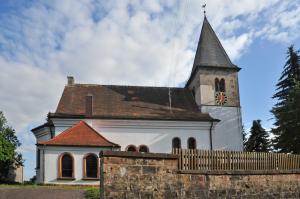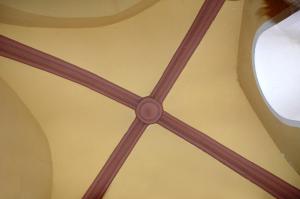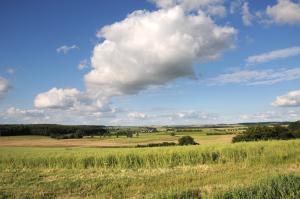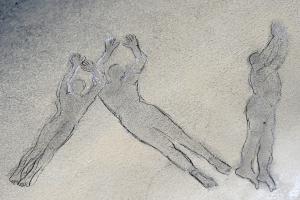The furrow opener
Text | Photography | Drawing: Peter Michael Lupp
Photomontage: Elke Birkelbach
Place-related point of reference for the poetic thinking pictures
Protestant church, Brenschelbach. West tower “Hornbacher Turm” (14th century).
St. Bartholomew was one of the twelve apostles chosen by Jesus (Matthew 10:1-4). As a missionary, Bartholomew traveled through Armenia and Mesopotamia. He is even said to have traveled as far as India, where he left behind a Hebrew copy of the Gospel of Matthew. Many miraculous healings can be traced back to the apostle, but as a Christian he was persecuted, imprisoned and cruelly killed. The saint’s skin was flayed from his body before he was crucified. And so Bartholomew is often depicted with a flayed skin in both hands, for example in Michelangelo’s (even as a self-portrait!) painting “Last Judgement” in the Sistine Chapel.
The name “Bartholomew” (actually a boy’s name) comes from Armenian roots and translates as “son of Talmai” (furrow digger). The Hebrew term Talmai means “rich in furrows” and gives the name Bartholomew or Bartholomew a figurative dedication: a person who, behind a cultivated façade, also has a hidden earthy side - turned towards the mystical and incomprehensible - from which his basic trust is nourished.
The thinking pictures in the medieval choir room make poetic and artistic reference to this background to the naming of St. Bartholomew, to whom the church in Brenschelbach was dedicated in the Middle Ages.





